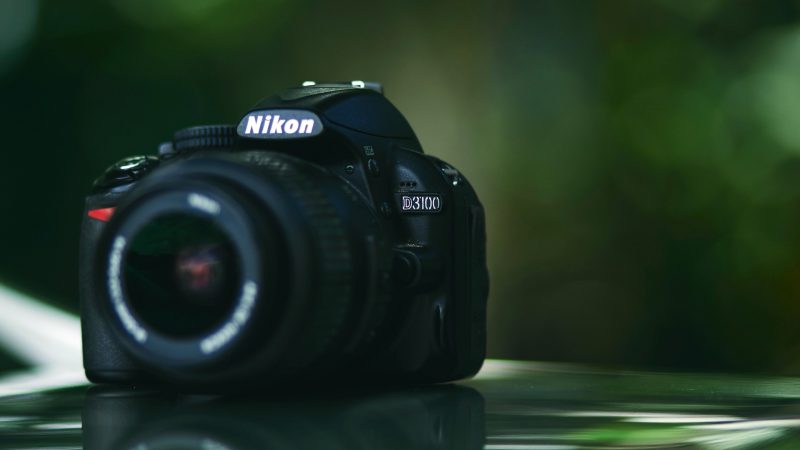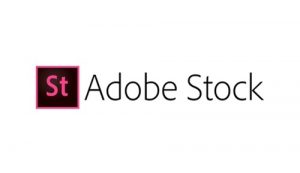Stock images are existing photos, which are stored so they can be ready to use for commercial, editorial, and personal purposes. Basically, the idea behind is to provide ready and available images to art and film directors, editors, publishers, product manufacturers or practically anyone who needs a specific image that captures a particular concept or theme.
Hiring a photographer to capture a custom image is not only expensive but also time-consuming. Stock photography solves this problem by providing a license of rights to existing photographs for the consumer to be able to use your stock images.
Do you want a photo of a tornado? You got it.
Photo of a breastfeeding mother you can use for your milk product advertisement? Got that too.
Most stock photos are copyrighted: the photographer retains the ownership and intellectual property over the photo and anyone using these photos without the owners’ permission or without paying them the due royalties or credit can be sued with copyright infringement.
Table of Content
A Brief History of Stock Photography

Let’s take a quick trip back in time when we still used 35 mm film canisters to take photos and print them. For more than 75 years this was the gold standard that dominated the photo industry. This was the only way to store our images for a long time.
However, 35 mm film canisters usually have an expiration date of 2 years from manufacturing date and it can be prolonged or shortened depending on the way it is stored. The canister film’s biggest enemy was the heat and once it’s stored in a place where it’s exposed to heat or sunlight, the film is degraded rather quickly and produces grainy, washed-out photos once it was developed in the darkroom.
If the canister film is stored in a freezer, the film can be preserved for a time way past its expiration date. But still, during the time when we had analog devices and there was no way to store images digitally, the only reliable way to preserve photos – whether for personal purposes was storing them to photo albums to keep memories for a lifetime (or almost), or for business purposes like stock photography – in print.
Stock photography’s history dates way back in the late 19th century up to the early 20th century when staff photographers were hired to provide photos for newspapers and magazines in the printing press.
Eventually, in an effort to save costs of hiring photographers for commission-based photoshoots, publishers and advertisers began to consider using stock photos. Then, independent freelance photographers took over.
The first ever stock photography agency built was founded by H. Armstrong Roberts. He recognized the need to use certain generic subjects in photography over and over for purposes such as advertising in order to promote their products and services that will cost less than hiring a photographer.
When photographers upload their images to a stock photography agency, they give their permission for the agency to license them and they are paid. A portion of the sales is kept as a commission by the agency. Stock photographers can sell the license to rights to a particular image for less because they can sell the same image many times.
Related: Profitable Photography: Selling Stock Photos for Beginners
The Development of Stock Photography Business Models

Since the only reliable way to store stock images back then was in print, buyers had to visit agencies and libraries to look through file cabinets of images in order to find what they need.
Marketing brochures and print catalogs of images often used for advertising were also produced and sent to prospective customers to provide them with a selection of images they can buy. Though these catalogs were expensive to produce, the ROI per image was so much higher during that time and the expense was justified.
During that time, buyers only paid a license for images that had a specific use as a billboard or magazine and they could use it only for a specific length of time. This is called a Rights-Managed (RM) license.
The Rights-Managed business model for stock photography allows for a one-time charge for the use of a photo or set of photos under one project. If you want to use the images for additional projects, these images need to be re-licensed again.
For example, you can use a Rights-Managed photo for a brochure, but if you want to use it again on a billboard, you’d need to purchase a new licensing agreement that outlines the billboard use.
Fast forward to the 90s when we saw a huge advancement in digital photography and digital technology. The advent of digital cameras created a huge supply of images to the market. We started to be able to store images CD-ROM discs. Various companies offered a collection of images on CD-ROM discs (called PhotoDiscs or PhotoCD) at a fixed price that gave the license to the buyer to use the images in the disc indefinitely.
This is also called a Royalty-Free (RF) license.
Unlike Rights-Managed, the Royalty-Free business model for stock photography allows the buyer to use his purchased images multiple times on multiple projects with few restrictions, and without having to pay further licensing fees.
In our earlier example, if you used an image to a brochure, you can use it again on a billboard, a poster, a business card, etc. without further charges.
Later on, the introduction of the Internet had radically altered the stock photo industry.
As a wider bandwidth became available on the internet, the delivery system for digital image files transitioned from shipping PhotoDiscs to uploading them to the internet. This favored the RF business model since agencies using this model were mostly working with digital images already.
While the agencies using the RM business model had to either play catch up in digitizing their images or sell out to a large company or go out of business if they find digitizing their entire library of stock photos financially impractical.
The Microstock Industry

The adoption of Royalty-Free licenses gave birth to the Microstock industry. Microstock was derived from the term Micropayment Stock Photography.
What defines a company as a microstock photography company:
1. They source their images almost exclusively via the Internet
2. They take photos from a wider range of photographers than the traditional stock agencies (including a willingness to accept images from “amateurs” and hobbyists)
3. Sell their images at a very low rate (from US$0.20 to $10 in the US) for a royalty-free (RF) image
The microstock companies offered either on-demand payment schemes or subscription-based plans. The general price for the former is between $1 and $15. The latter offered pretty much-unlimited access to a large number of stock photos for a fixed monthly payment plan.
Photos that cost as much as $8 each can only cost as low as $0.20 when you consider the subscription-based plan.
While very flexible, RF photos still have restrictions to a certain extent, mainly distribution and reproduction volume and use of images in commercially sold items.
Examples of these are calendars, t-shirts, greeting cards, and other merchandising products. For these reasons, the need for an Extended/Enhanced license was introduced. This license is still related to Royalty-Free but allows for an increase in the limit of copies of the reproduction of stock photos or eliminate this limit completely.
Extended licenses are more expensive than standard Royalty-Free licenses but are very useful for the purposes mentioned especially when you don’t want to go through the process of setting up a custom RM license, which tends to be more expensive than an Extended license.
The affordability of the RF model made this the common choice for budget-conscious consumers especially startup businesses, but there are cons that made the RM business model still thrive especially for big companies.
Rights-Managed vs. Royalty-Free: Which One to Use?

The downside of the RF images is the non-exclusivity. Images are allowed to be licensed as many times as buyers are willing to buy, so other buyers may end up using the same stock photo that you purchased.
Given they are cheap, the images are often bought and used by different individuals or companies at the same time. This posed as a problem when several big companies used the same RF stock photo for their campaign ads.
This is where the usefulness of the RM license comes in. What makes it attractive is the option for exclusive use – meaning nobody else can use the image that you’ve just purchased.
The price for the license tends to be pricier than RF but still depends on the specifics of intended use. Sometimes it turns out quite affordable while there are times when it gets considerably expensive.
There are also other factors that dictate the price of an RM license like the extension or limitation of rights included in the license as well as image size and resolution. Prices vary anywhere between $50 each up to thousands of dollars.
Being high-priced and exclusive, Rights-Managed stock photography is also otherwise known as Macrostock Photography.
A buyer needs to review his needs and use before purchasing a photo from a stock photography agency:
1. If the photo will be used for a local brochure, invitation, or general blogging purposes, RF images are the best choice.
2. If the photo will be used as the image of a company, RM with an exclusive agreement would be the best choice so no other company (especially your competitor) can purchase the same image.
How to Start Your Stock Photography Career
Now that you understand how stock photography started and progressed and the business models that came along with it, let’s talk about how to enter the stock photography industry. Where you can earn money by selling your photos to the photo stock market and we will give you some of the tips for you to become successful in this field.
Now, let’s start:
1. The Equipment

At the absolute minimum, you’ll need a quality digital camera. Digital Single Lens Reflex or DSLR is the camera design that people usually think of when talking about serious or professional photography.
Stock images might be available in different sizes and resolutions but what’s important is they should be high quality. Get yourself a digital DSLR camera as soon as you can if you don’t already have one.
Luckily for you, we made a list of high-quality entry-level DSLR cameras for you to start your stock photography career.
Invest in a DSLR with interchangeable lenses if you can and buy different lenses as well. Interchangeable lenses allow you to have a fantastic level of control over the quality of the images produced by your DSLR camera.
A superior lens will yield an image with sharper details, better contrast, and richer colors. Every lens is engineered with different focal lengths. The focal length determines the lens’s field of view.
A lens with a shorter focal length has a much wider field of view while a lens with a longer focal length (also known as a telephoto lens) has a very narrow field of view but also packs lots of magnification power. Depending on the application and subjects of your photography, purchase lenses that will suit your needs.
For landscape images, for example, a lens with shorter focal length is advised. However, you would want to have a telephoto lens for capturing sports, wildlife, or anything that is non-static and needs to be shot from a distance.
Related: 8 Reasons Why a 50mm Lens Is All You Need for Amazing Photography
After that, you’ll need the tripods, memory cards, flashes, and studio equipment. Obviously, you will also require the non-photography equipment such as a computer and internet connection to process your photos and upload them to stock sites.
You might also need to invest in photography software and applications like Adobe Photoshop and Adobe Lightroom. These are standard in the photography industry for your image post-processing needs but you can also try out the free or more affordable ones if you don’t have the budget just yet.
If a DSLR is way over your price range you can still take quality images with your phone. The problem is that a phone with quality camera costs almost like a DSLR.
We also have a list but this one is different because it also contains budget phones with a quality camera.
Related: 5 Reasons Why Some Phone Cameras Are Better Than a DSLR Camera
2. The Subject

Choose carefully what you are going to shoot. You would want to specialize in a subject that you enjoy taking pictures of. Still, do some research about your chosen subject, how much demand is there for that particular subject, how well they are sold (more on this later).
Ideally, you want a subject that is in demand but has a low supply which means you’re likely to sell more of these photos but that doesn’t mean you can’t be successful in shooting popular subjects. Try to check the popular images that are already online and improve on their concept.
Related: What Is the Most Profitable Photography Niche?
If the subject of your photography is people, it’s important to have a legal permit signed by the people depicted in your images expressing their agreement to have their likeness displayed and used for commercial purposes. This legal permit is called a model release document.
The same goes for private property – estates, buildings, works of art, trademark logos and product design, etc. In order to use images of these things commercially, the owner needs to sign a property release document stating that they agree to have their property depicted in images and be used for commercial purposes.
Related: Photography Laws: Can a Photographer Use My Photos Without My Permission?
3. Choose Your Photos

Try to take some shots of your subject or concept of choice. Ensure your photos:
1. are high quality – all stock photography agencies review the stock photos submitted to them so try to get honest opinions from other people about the quality of your photos.
2. don’t have trademarks and brands on your photos – your images will be rejected if there are any brand names or trademarks visible on them, so remove them with a photo editing tool like Adobe Photoshop if they’re in the image.
3. are free from dust spots and noise – Use a good photo editing tool like Adobe Photoshop to remove imperfections and noise from your images but don’t overly filter your photos. The stock agencies will definitely discern if you filter your images too much and they will get rejected.
4. Choose a Stock Photography Agency and Prepare Your Photos for Submission

Now it’s time to register with a stock photography agency to upload the images that you shot. Before you do this you may want to read their submission guidelines as they will teach you which photos will have more demand than others. Which photos will most likely be rejected, etc.
In general, they will require model releases for images with people on them. They will definitely reject photos with people unless the person/s featured in the shot is off in the distance and are completely unrecognizable.
However, you might encounter problems with images that depict people that are not featured but still recognizable. Stock agencies might accept these types of images for editorial purposes even without a model release permit but they will not accept these for commercial purposes. However, you earn very little or none at all for stock photos used for editorial purposes.
You need to make sure in their guidelines that the property or landmark featured in your photos are not on their restricted list. Once you’ve verified that, prepare your property release document for submission along with the images that contain the said property.
Choose your top 20 images for your initial submission. Consider very carefully the keywords that you’ll use to describe your photos. Try to research keyword ideas from similar images already on the site to ensure that your photos will be found in searches.
This will definitely make a difference in the presentation of your portfolio. Use a tool like Adobe Lightroom to embed your descriptions and keywords as metadata to your images. However, don’t spam keywords on your images as not only they will most likely get rejected by agencies but it also can get you banned.
No matter how good your images look for you, stock agencies will not approve every photo that you submit to them. They will provide feedback as to why. But in general, images with poor focus and noise especially those shot at night, and photos that are simply uninspiring will most likely get rejected.
Don’t be put off if you don’t get accepted the first time. Take time to read the reasons why your images are rejected. Learn from your mistakes and improve.
Once you get accepted though it gets easier from there. Only your initial batch of submitted photos is very strictly reviewed and the stock agencies become more lenient on your subsequent submissions.
Stock Photography Agencies
There are a lot of agencies offering stock photography but we’re only discussing the most prominent ones and we’ll just touch on other agencies that you can try out.
Shutterstock
If you’re just starting out, Shutterstock is one of the easiest microstock platforms to get started on as it has one of the most intuitive interfaces to use. They also offer one of the most affordable royalty-free content out there thus having a really vast customer base.
Your audience consists of bloggers, startup businesses and other people who need images but don’t have the budget. And because the site has a large international customer base, it’s pretty easy to sell even with all the competition.
However, since the stock photos in this site sell for peanuts, it can get discouraging to see that you’re only earning as low as $0.25 per photo. The images uploaded are non-exclusive though, so they can sell over and over again.
And if you’re actively uploading high-quality images, you might make as much as $7000 overtime on images that do really well. Also, as your earnings on the site increase, so does your income per download too.
The site’s Contributor Dashboard gives you a lot of relevant information about your content performance like top-performing images, real-time sales, locations where buyers are downloading from. You can use this information as feedback to improve and refine what you shoot and submit to the site.
Another advantage of non-exclusivity in Shutterstock is you can upload the same image to other stock photography sites – and different stock sites tend to have different prices for the same image.
Getty Images
Getty Images is one of the most renowned companies in the world of stock photography. When it comes to top-class photography, Getty has a serious reputation like no other. Their collection of over 80 million of high-quality imagery makes them the top choice for buying Rights-Managed stock photos.
Since the stock photos are Rights-Managed, it means a lot of content that they offer cannot be found anywhere else. The potential income that you can earn from the site is also pretty high compared to microstock companies. For example, a high-resolution photo can sell as high as $600 and will net you $120 (20% income).
However, since the license to the images is exclusive, you cannot sell the same image on other stock sites. Also, the review times for submissions are unpredictable. Some images get reviewed and listed in 2 days, some take as much as 6 weeks.
It is advised that you don’t fully invest on Getty for your stock photos unless you’re really into serious stock photography business and you think the disadvantages are worth it.
iStock
iStock (formerly known as iStockphoto) is the microstock arm of Getty Images and is the first microstock agency in the world. Hence it offers an enormous selection of high-quality images. And because it’s microstock, images are not exclusive, which means that images that you sell on iStock can still be sold to other stock sites.
The main difference it has over Shutterstock is iStock offers optional exclusivity which means you can earn a higher percentage – up to 45% of each sale. However, the prices of images are lower compared to those offered by Getty Images.
Being microstock, the RF images are still sold dirt cheap. The base rate for non-exclusive stock photos is 15%. So for photos selling for $10, you get a measly $1.50 cut and that’s for non-subscribers. With most sales coming from subscription customers, the rate of income is much lower, ranging from $0.20 to $0.50 per sale.
Adobe Stock
Adobe Stock is the newest player in stock photography, launching in about 3 years ago.
The biggest advantage of Adobe Stock is its integration with Adobe CC software. Especially the Lightroom making it very seamless to upload photos. All you have to do is drop the photos in the Adobe Stock publishing area and it will upload it for you. And even if your photos are published already, you can still edit things like keywords and the title.
Being the world standard in photography software development, their submission platform and content dashboard have fantastic design and easy to navigate interface compared to its competitors.
You can easily check individual stats for each photo and real-time sales. Also, the turn around time for reviewing submissions is very quick – only takes a day or two on average. However, they are very picky about approving content. Photos that can be accepted on other sites can be rejected by Adobe Stock.
Adobe Stock is microstock meaning you won’t earn that much from your stock images. However, it seems that they sell for a much higher rate compared to Shutterstock. Most stock images are selling for an average of $0.99 each which is not bad at all.
There are a lot of other stock photography sites you can choose and try out. Check out the list below:
Related: 17 Best Websites to Sell Your Photography (With Tips on Most Profitable Photos to Sell!)
How to Shoot Photos That Will Sell: the Current Trends in Stock Photography

While you can focus on your own photography niche, it’s important that you research the best selling stock photos. Also the current trends in stock photography in order to make good sales out of your photos.
According to expert stock photographers, the most in-demand stock photos are anything that happens in natural life. Photos that depict different aspects of an individual’s life – lifestyle, education, medical, and business. Those photos are what people buy the most.
And as long as the photos are natural and realistic i.e. they show the inherent beauty of the scene, the models, and the atmosphere, they will sell. Photos of people with realistic facial expressions, situations that are as authentic as possible, these are what consumers like the most.
People don’t like images where the model looks uneasy and have fake facial expressions. So it’s important when shooting photos with models, try to figure out what’s best for the model as a person and let him/her go with the flow instead of trying the make the model act like someone they aren’t.
However, if you follow the current trends on your chosen subject or genre, that might provide an opportunity for some stock photo sales. Current events can also affect what’s trending in stock photography that will surely gain traction with a widespread audience.
Here are the top photography trends:
From StockPhotoSecrets Shop
- Neon Fleuro
- Minimalist Pastel
- Cosmic Universe
From Shutterstock
- Space
- Fantasy
- Natural Luxury
- New Minimalism
- Cactus
- Holographic Foil
- Punchy Pastels
- A Global March
- Cryptocurrency
- Digital Crafts
- Ancient Geometrics
From iStock/Getty Images
- Second Renaissance
- Conceptual Realism
- Masculinity Undone
From Depositphotos
- Accept Me For Who I Am
- Perfect Strangers
- Impact Photography
- Artistic Expressions Through Travel
- Deadpan Photography
- Motion as a New Norm for Graphics
- Blurred Lines of Reality
- Creative Collages
- Bold Color and Effects
- Video as a Mean of Communication
From Photocase
- Humour
- Simplified Motives
- Diversity
From Adobe Stock
- Silence and Solitude
- Fluid Self
- Multilocalism
- Touch and Tactility
- Creative Reality
- History and Memory
Depending on where you’re uploading your stock photos, you might want to follow what’s trending on the site. Play with the concept and upload relevant stock photos.
You may still follow your own concepts or ideas that are not on this list but it’s hard to tell how big they will be. Maybe they will pick up the pace later on. Whether these stock photos are worth investing in or not, it’s entirely up to you.
No matter how good you think your photos are and what agency you sell them through, do not expect to become rich through stock photography.
Most photographers say stock photography is not really a huge income source and only consider it as a side revenue stream and they pursue another endeavor as their primary source of income.
You need to understand this so you don’t get discouraged. Selling stock photos can give you a nice source of additional income but most of the time it’s not going to pay your bills. This is especially true when you’re just starting out. There’s simply too much competition and supply nowadays for you to make a significant amount of income from selling stock photos.
Still, there’s no harm in earning even the smallest trickle of revenue from a relatively passive source of income like stock photography. Try to combine various elements with stock photography. Do this in order for you to earn an acceptable amount of income like offering paid services, running photography workshops, creating online photography training, and writing.
Learn from other successful stock photographers. Do lots of research about what’s trending in the stock photography field. Continue to hone your photography skills as there will always be room for improvement. Once you have learned the right mindset, attitude, and approach, you will find stock photography can be a fun, educational and motivating experience.
Related: 8 Ways to Make Money as a Photographer in 2019






